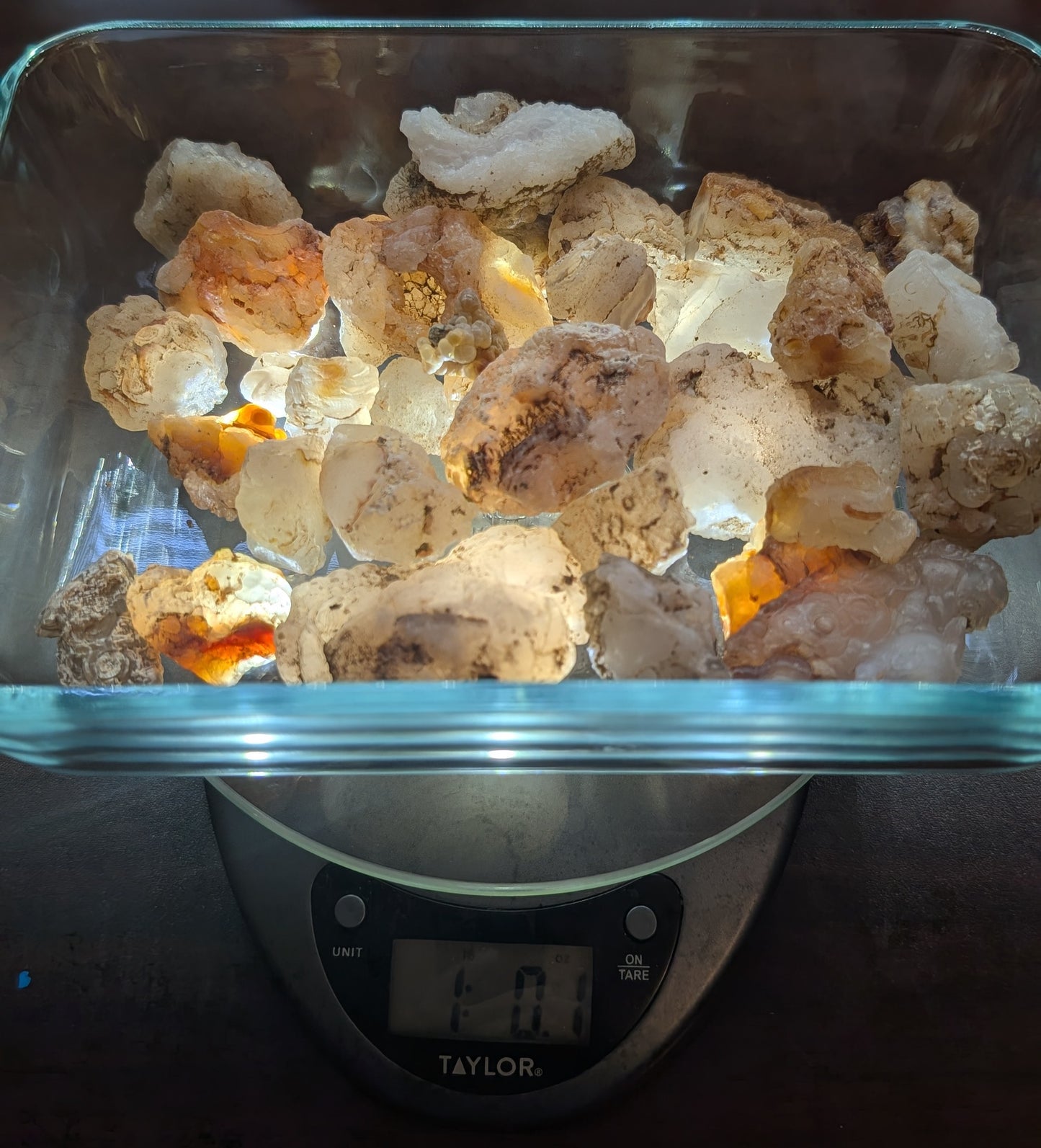Auglocqnuk's Treasures
1 Pound Mixed Raw Chalcedony and Fire Agate
1 Pound Mixed Raw Chalcedony and Fire Agate
Couldn't load pickup availability
Unleash Your Inner Artisan!
Ignite your collection with our exclusive one-pound mix of raw Chalcedony and Fire Agate! This hand-selected assortment is a dream for any lapidary artist, collector, or crystal enthusiast.
Inside each bag, you'll discover the classic, waxy luster of translucent chalcedony nestled alongside the legendary, fiery iridescence of precious fire agate. These rough, natural stones are perfect for tumbling, cabbing, or simply admiring. Explore their unique textures and patterns, and don't forget to check for a surprise—many pieces glow with a stunning green fluorescence under UV light!
This is your chance to own a piece of geological magic, perfect for projects or adding raw beauty to your collection.
Ready to stock up? Buy 3 or more pounds and get an automatic 10% discount at checkout! Don't wait, order your treasure-filled bag today and let your creativity catch fire.
How Does Chalcedony Form?
Chalcedony, a captivating variety of microcrystalline quartz, forms through a fascinating geological process and exhibits intriguing properties under ultraviolet (UV) light.
The Formation of a Silicate Treasure
Chalcedony's creation is a story of water and silica. It typically forms in volcanic and sedimentary rocks as a result of the precipitation of silica-rich solutions. Here's a breakdown of the process:
- Silica Source: The journey begins with a source of silica (SiO2), often from the decomposition of volcanic glass or other silica-bearing minerals.
- Dissolution: Water, especially when heated or slightly alkaline, dissolves this silica, creating a silica-rich solution.
- Deposition: This solution then percolates through cavities, fractures, and vesicles in rocks. As the solution cools or its chemical composition changes, the silica begins to precipitate out.
- Microcrystalline Growth: Instead of forming large, visible crystals like its cousin, macrocrystalline quartz (think amethyst or citrine), chalcedony's silica deposits as incredibly fine, fibrous crystals. These microscopic crystals intergrow, creating the characteristic waxy luster and translucent to opaque appearance of chalcedony.
A Hidden Glow: UV Reactivity
One of the more captivating aspects of some chalcedony specimens is their ability to fluoresce under ultraviolet light. This phenomenon, known as UV reactivity, is not a universal property of chalcedony but is present in certain varieties and locations.
When exposed to UV radiation, certain elements or mineral impurities within the chalcedony absorb the high-energy UV light and then re-emit it at a longer, visible wavelength. This causes the stone to appear to glow.
The color of the fluorescence can vary and is dependent on the specific "activator" elements present. Common fluorescent colors in chalcedony include:
-
Green: Often attributed to the presence of trace amounts of uranium salts (uranyl ions).
-
Yellow or White: Can also be caused by various activators.
It's important to note that the intensity and color of the fluorescence can differ between shortwave (SW) and longwave (LW) UV light. Not all chalcedony will fluoresce, and the presence and strength of this property can sometimes be a clue to the stone's origin. This hidden beauty adds another layer of intrigue to the already fascinating world of chalcedony.
Share



